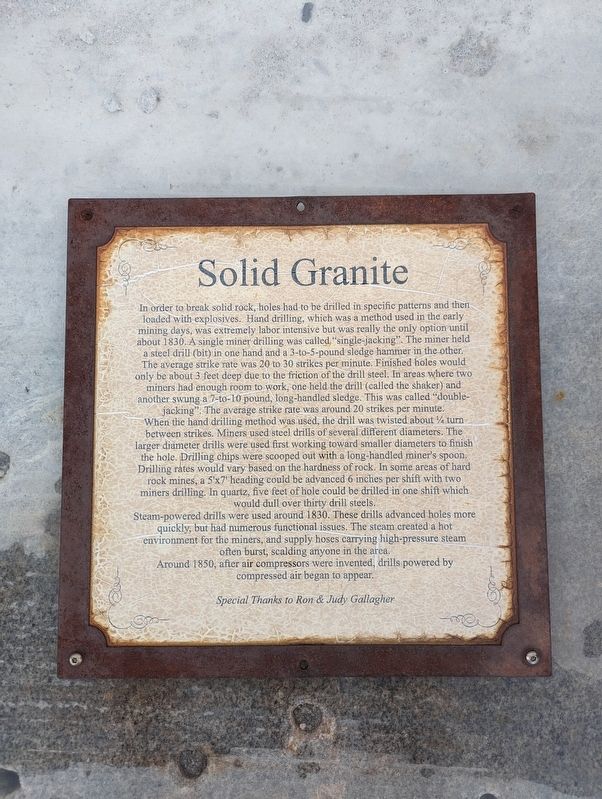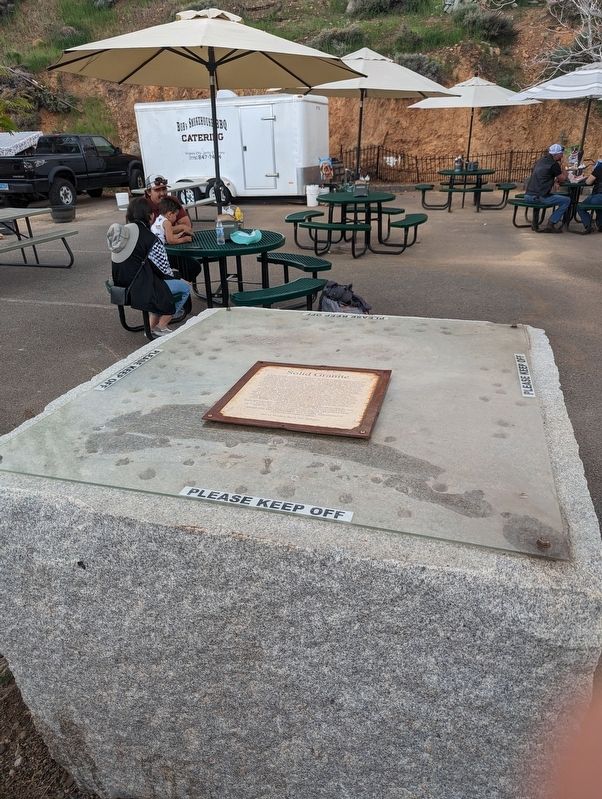Virginia City in Storey County, Nevada — The American Mountains (Southwest)
Solid Granite
In order to break solid rock, holes had to be drilled in specific patterns and then loaded with explosives. Hand drilling, which was a method used in the early mining days, was extremely labor intensive but was really the only option until about 1830. A single miner drilling was called "single-jacking". The miner held a steel drill (bit) in one hand and a 3-to-5-pound sledge hammer in the other. The average strike rate was 20 to 30 strikes per minute. Finished holes would only be about 3 feet deep due to the friction of the drill steel. In areas where two miners had enough room to work, one held the drill (called the shaker) and another swung a 7-to-10 pound, long-handled sledge. This was called "double-jacking". The average strike rate was around 20 strikes per minute. When the hand drilling method was used, the drill was twisted about 1/4 turn between strikes. Miners used steel drills of several different diameters. The larger diameter drills were used first working toward smaller diameters to finish the hole. Drilling chips were scooped out with a long-handled miner's spoon. Drilling rates would vary based on the hardness of rock. In some areas of hard rock mines, a 5'x7' heading could be advanced 6 inches per shift with two miners drilling. In quartz, five feet of hole could be drilled in one shift which would dull over thirty drill steels.
Steam-powered drills were used around 1830. These drills advanced holes more quickly, but had numerous functional issues. The steam created a hot environment for the miners, and supply hoses carrying high-pressure steam often burst, scalding anyone in the area.
Around 1850, after air compressors were invented, drills powered by compressed air began to appear.
Erected by Ron and Judy Gallagher.
Topics. This historical marker is listed in this topic list: Industry & Commerce. A significant historical year for this entry is 1830.
Location. 39° 18.472′ N, 119° 39.041′ W. Marker is in Virginia City, Nevada, in Storey County. Marker is on South C Street, 0.2 miles south of Taylor Street, on the left when traveling north. Touch for map. Marker is at or near this postal address: 204 South C St, Virginia City NV 89440, United States of America. Touch for directions.
Other nearby markers. At least 8 other markers are within walking distance of this marker. Pelton Wheel (here, next to this marker); First Presbyterian Church (a few steps from this marker); Young America Engine Co. No. 2 (within shouting distance of this marker); Frank Bell (about 300 feet away, measured in a direct line); Bonner Shaft of the Gould & Curry Mine (about 400 feet away); In Memory of Julia C. Bulette (about 400 feet away); BOB (about 400 feet away); “Sixty-Two” Building (about 400 feet away). Touch for a list and map of all markers in Virginia City.
Credits. This page was last revised on May 27, 2023. It was originally submitted on May 21, 2023, by Brian Phelps of Carson City, Nevada. This page has been viewed 70 times since then and 19 times this year. Photos: 1, 2. submitted on May 21, 2023, by Brian Phelps of Carson City, Nevada. • J. Makali Bruton was the editor who published this page.

